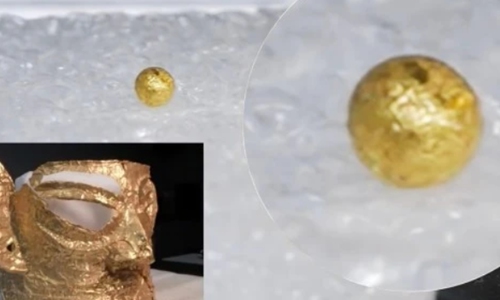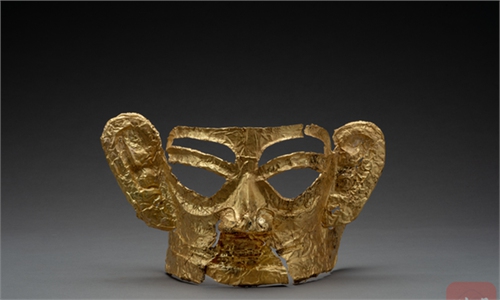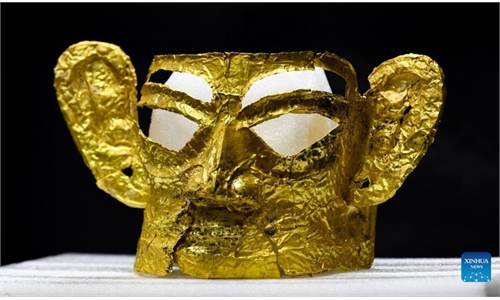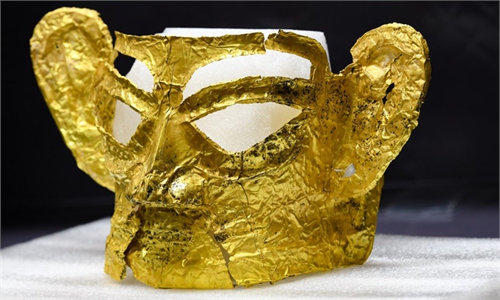
Gold beads discovered in Sanxingdui Ruins. Photo: Sina Weibo
A number of gold beads were discovered by experts at the Sanxingdui Ruins on Friday. Despite their extremely tiny size, the beads are almost pure gold and are likely a "prototype" example showing China's early bead craftsmanship.The tiny beads, the largest of which is only one or two millimeters in diameter, are 99 percent gold.
Although experts are still unsure what the beads were used for, theories range from them being gold remnants that dripped off while making a larger gold item, to that they were deliberately made so small, perhaps to be decorations on a larger item.
"They are so tiny that they were unlikely to have been carved by hand. In my opinion, I guess they were likely made using an ancient technique that melts small pieces of gold first and then lets them cool, perhaps in water, to form a bead shape. This technique can be traced back to the Han Dynasty (206BC-AD220)," Zhang Nini, an expert in ancient Chinese craftsmanship, told the Global Times on Monday.
The beads were discovered in pit No.5 at the Sanxingdui Ruins site. Size-wise, the pit is the smallest one at the site, but it contains the biggest number of gold items including an axe-like tool and some disc-like gold chips.
The discovery of the small beads surprised netizens on China's Twitter-like Sina Weibo.
"What made the ancients think gold is valuable? Who did those gold beads belong to? Too many mysteries. The Sanxingdui Ruins are a place of endless surprises and treasures," one netizen posted.



